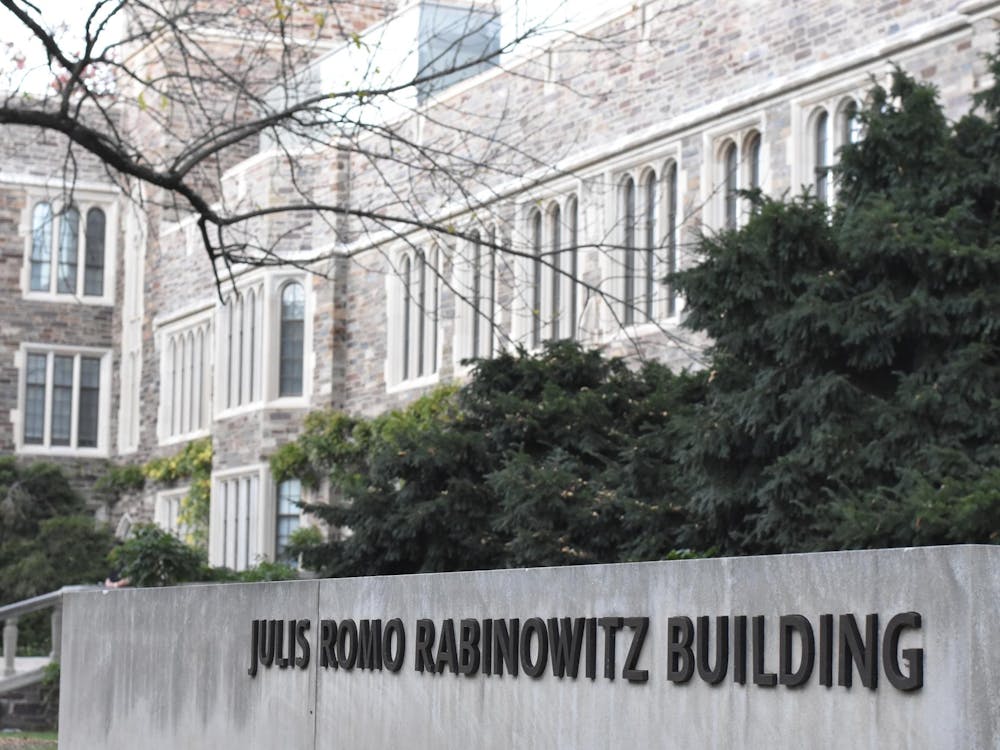As the world prepares for war, Princeton prepares for Bicker.
Certain events force the tensions in everyday life to emerge. By drawing attention to the eating clubs, Bicker is one of those events, forcing to the surface the tensions in Princeton's identity. In the 2001-2002 academic year, Princeton led the way in higher education, initiating a "no-loan" policy for financial aid. Students who qualify for need-based aid receive a financial aid award that consists of job and grant, rather than job, loan and grant. This remarkable step goes a long way toward making Princeton accessible to anyone of merit. Indeed, 50 percent of the class of 2006 is receiving some type of financial assistance — up 40 percent from 2000. Almost 30 percent of the total undergraduate student body is from minority backgrounds and almost 8 percent are international students. The University is founded more on inclusiveness than exclusivity, more on merit than social privilege. But the eating clubs reflect a different part of the Princeton experience for many students — a Princeton experience in which economic status still plays an unfortunately large role.
In the interest of full disclosure: I am a member of Ivy Club, and I think the clubs can play an important role in forging bonds among their members. But given the central role of clubs in campus life, and the absence of a significantly appealing alternative, it would be inaccurate to consider club membership a "choice." As one student put it, the "choice" is between eating with all of your friends and feeling alienated from a huge portion of the Princeton community. Critics often charge the clubs are divisive.
But what does that mean, exactly? I think it means three things. First, joining a club often strains — and sometimes severs — friendships formed in residential colleges. Second, constituencies in the clubs from certain schools and backgrounds can make underclassmen feel uncomfortable bickering or signing-in. Third, clubs divide the school along socioeconomic lines: wealthier students accept membership into their clubs without any consideration of the costs, while poorer students find it difficult to pay the costs of membership. Some decide to drop out, or are unwilling for financial reasons to bicker or sign-in in the first place.
The first two concerns are structural questions about the University and the club system. The last issue — economic divisiveness — seems to me the worst, and the most easily fixed. A club system that discriminates against undergraduates with financial concerns is profoundly inconsistent with the ideal of Princeton: a place of merit and inclusiveness. And while the role of the clubs at Princeton is a longterm issue, there is an immediate solution to the economic divisiveness of the clubs: the eating clubs and the University should, together, fully cover the costs of board at all eating clubs for all students on financial assistance.
It's important to understand how the system currently works. The University board rate included in the aid budget is $3,930. Most clubs charge between $5,200 and $5,550 for board. The University offers a subsidized loan for the difference, usually between $1,270 and $1,620. According to Don Betterton, director of financial aid, there are two main reasons why financial aid students might decide not to join a club.
"One would be a reluctance to take out a loan for as much as $3,240 over a two year period, especially since the University no longer asks students to borrow as part of their initial financial aid award. The other reason that club membership might be difficult for an aid student is that clubs have other miscellaneous charges like social fees that are not eligible for the loan policy." Two of the more expensive clubs, Ivy and Cottage, go to great lengths to work out payment plans to help struggling members meet their dues.
But according to Ivy President Rob Neely '03 sometimes that is not enough. "Over the past few years, there have been students who have dropped out of Ivy and other clubs for financial reasons." And many of us know students who have chosen to forego joining a club because of the financial burden it represents.
Neither Ivy nor Cottage offers financial assistance — and all the other clubs I tried to reach did not provide information on whether or not they offered financial aid (I imagine because they do not).
It is unacceptable for any eating club not to offer substantial financial assistance to its members. Many clubs are now renovating, aiming to maintain their attractiveness when new dining options are added in the coming years — but members would be better served if their officers tapped club alumni to establish large financial aid endowments.
The University, too, has an important role to play. University administrators are rightly wary of embracing the eating club system. For better or worse, though, the clubs are a central part of Princeton life. As a result, the ability to be part of the Princeton community is frequently a function of family wealth. The cost of offering grants to cover eating club board would be significant — Betterton's rough estimate was around $1.3 million annually. But in the absence of action by Prospect Avenue to reduce dues or establish scholarship funds, that cost is necessary to ensure that all undergraduates have an equal opportunity to enjoy the Princeton experience. Adam Frankel is a Wilson School major from New York, N.Y. He can be reached at afrankel@princeton.edu.








